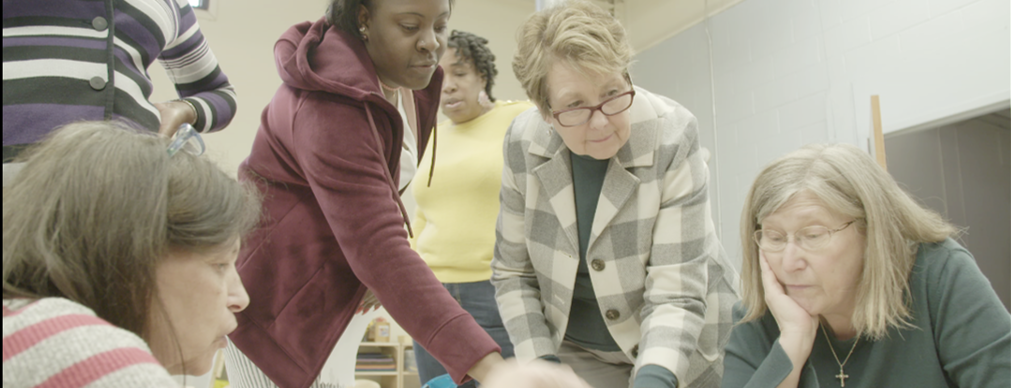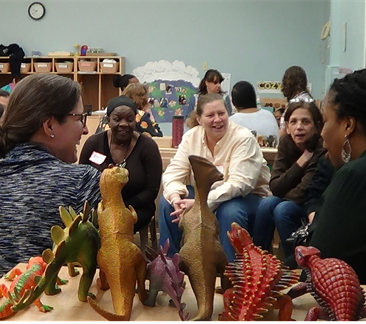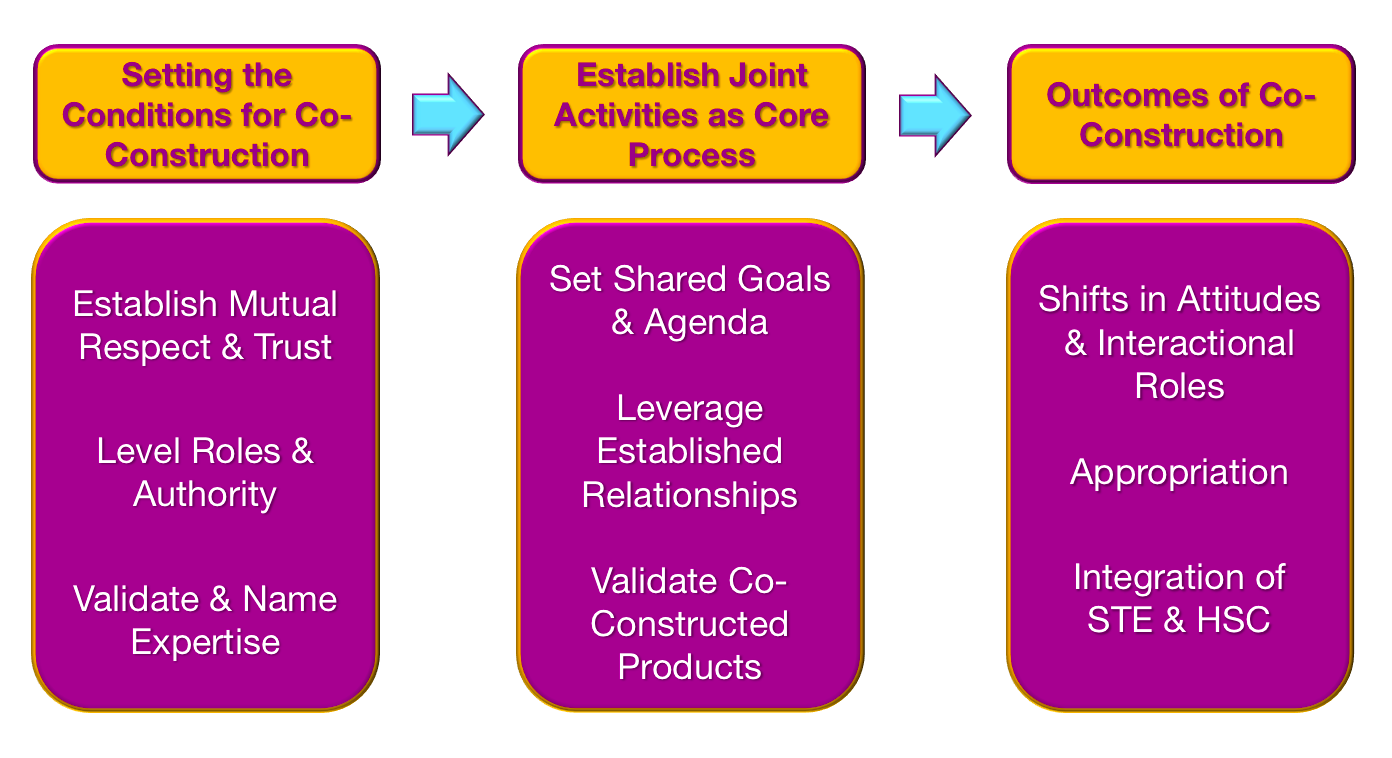It is our hope that the RISE Model of Co-Construction will inform future efforts to ensure that all students, regardless of where they live or the language they speak at home, feel a sense of belonging at school and learn the significant STE content required to participate in a technology-based society as STE-literate citizens and professionals.
Co-Construction is the principal innovation of RISE in which a more inclusive early childhood curriculum is conceptualized from a process of reciprocal engagement between parent and teachers to develop curriculum that empowers teachers and families to work jointly as equal partners and to incorporate home and community funds of knowledge into the formal curriculum of the preschool classroom. This is done by supporting teacher-parent communication and relationship building through experiences including joint activities and parent-teacher discussion groups.



